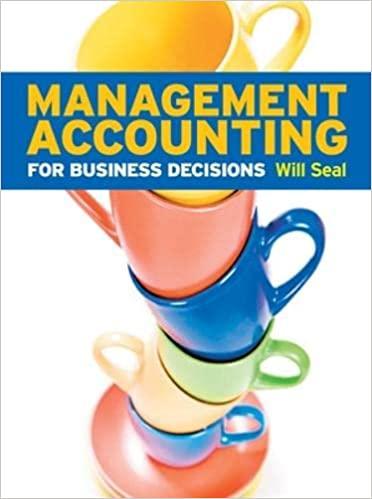P86 Evaluating a companys budget procedures Time allowed: 30 minutes Springfield Corporation operates on a calendar-year basis.
Question:
P8–6 Evaluating a company’s budget procedures Time allowed: 30 minutes Springfield Corporation operates on a calendar-year basis. It begins the annual budgeting process in late August, when the managing director establishes targets for the total pound sales and net income before taxes for the next year.
The sales target is given to the Marketing Department, where the marketing manager formulates a sales budget by product line in both units and pounds. From this budget, sales quotas by product line in units and pounds are established for each of the corporation’s sales districts.
The marketing manager also estimates the cost of the marketing activities required to support the target sales volume and prepares a tentative marketing expense budget.
The operations manager uses the sales and profit targets, the sales budget by product line, and the tentative marketing expense budget to determine the pound amounts that can be devoted to manufacturing and corporate office expense. The operations manager prepares the budget for corporate expenses, and then forwards to the Production Department the product-line sales budget in units and the total pound amount that can be devoted to manufacturing.
The production manager meets with the factory managers to develop a manufacturing plan that will produce the required units when needed within the cost constraints set by the operations manager. The budgeting process usually comes to a halt at this point because the Production Department does not consider the financial resources allocated to be adequate.
When this standstill occurs, the director of finance, the operations manager, the marketing manager and the production manager meet to determine the final budgets for each of the areas. This normally results in a modest increase in the total amount available for manufacturing costs, while the marketing expense and corporate office expense budgets are cut. The total sales and profit figures proposed by the managing director are seldom changed. Although the participants are seldom pleased with the compromise, these budgets are final. Each executive then develops a new detailed budget for the operations in his or her area.
None of the areas has achieved its budget in recent years. Sales often run below the target. When budgeted sales are not achieved, each area is expected to cut costs so that the managing director’s profit target can still be met. However, the profit target is seldom met because costs are not cut enough. In fact, costs often run above the original budget in all functional areas. The managing director is disturbed that Springfield has not been able to meet the sales and profit targets. He hired a consultant with considerable experience with companies in Springfield’s industry. The consultant reviewed the budgets for the past four years. He concluded that the productline sales budgets were reasonable and that the cost and expense budgets were adequate for the budgeted sales and production levels.
Required 1 Discuss how the budgeting process as employed by Springfield Corporation contributes to the failure to achieve the managing director’s sales and profit targets.
2 Suggest how Springfield Corporation’s budgeting process could be revised to correct the problem.
3 Should the functional areas be expected to cut their costs when sales volume falls below budget? Explain your answer.
Step by Step Answer:






